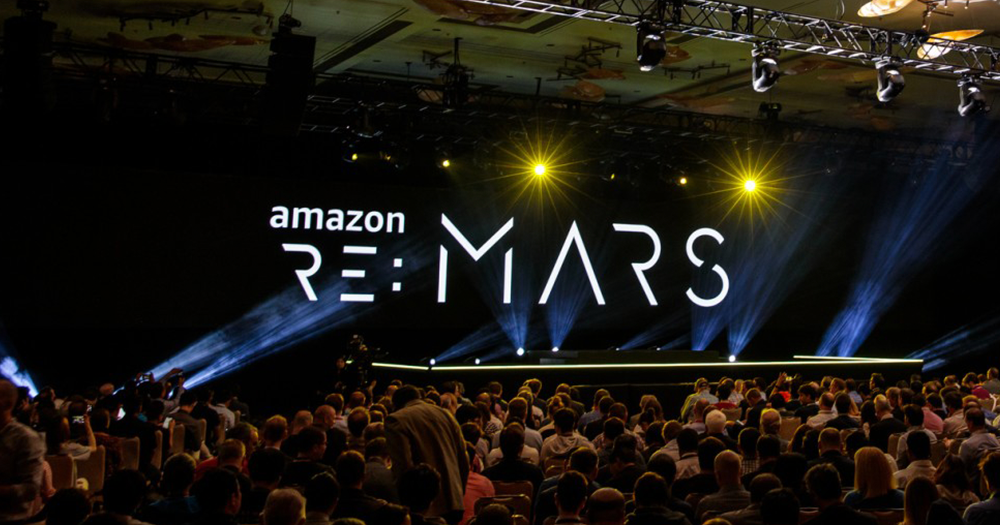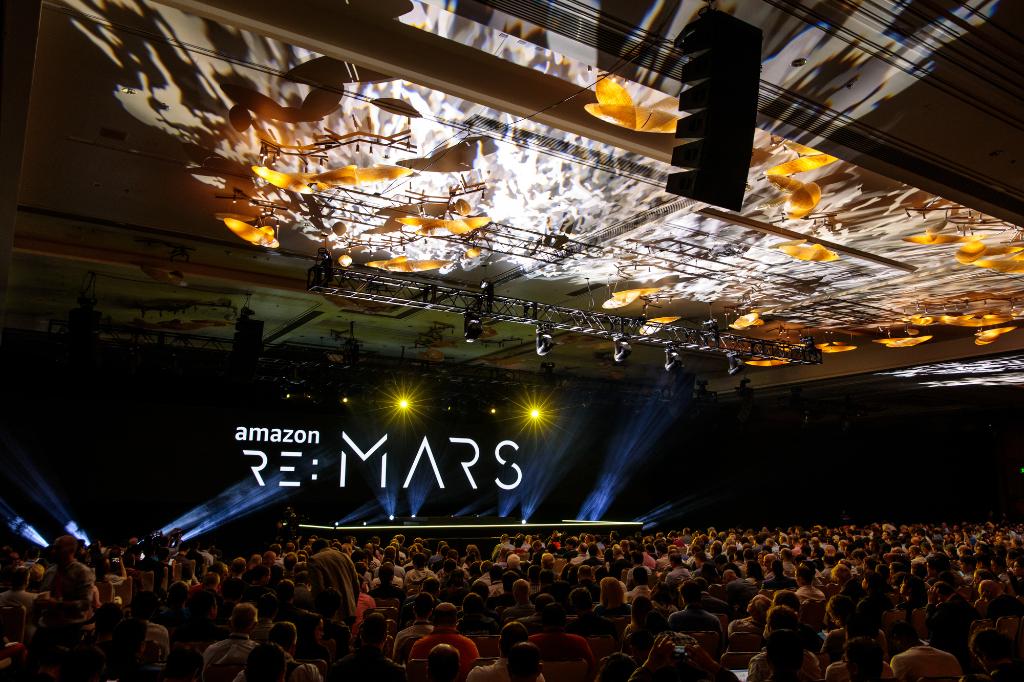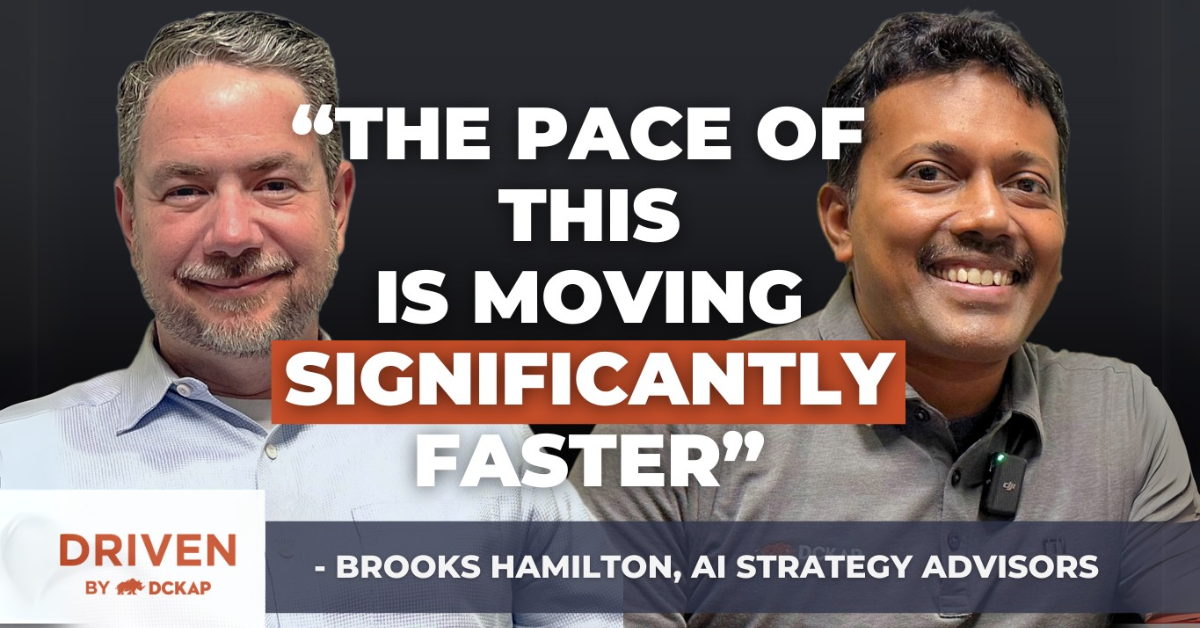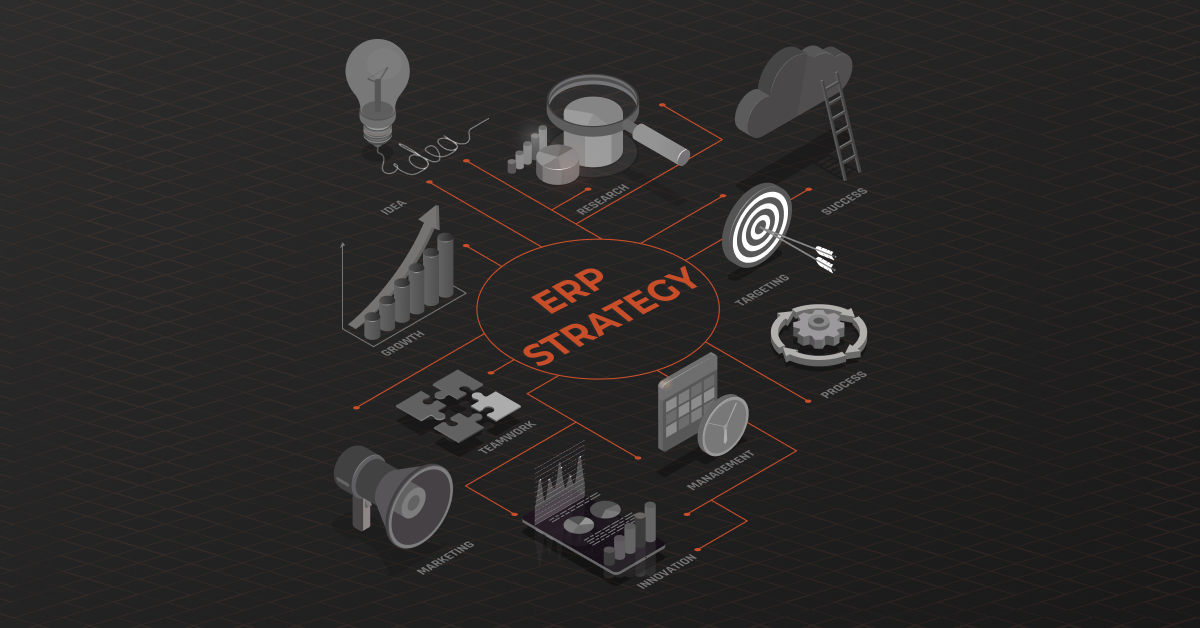This year, we had the privilege of attending the re:MARS conference, held on June 4-7 at the ARIA in Las Vegas, Nevada. Besides the amazing technology, the most interesting thing about this conference was the people we met. Many folks we bumped into were important people (doing groundbreaking research). Networking with the diverse attendees was extremely insightful and a key takeaway for us.
Though we have only begun to explore AI fields in our own work at DCKAP, it was a great learning experience and it helped to inspire our direction forward as a company.
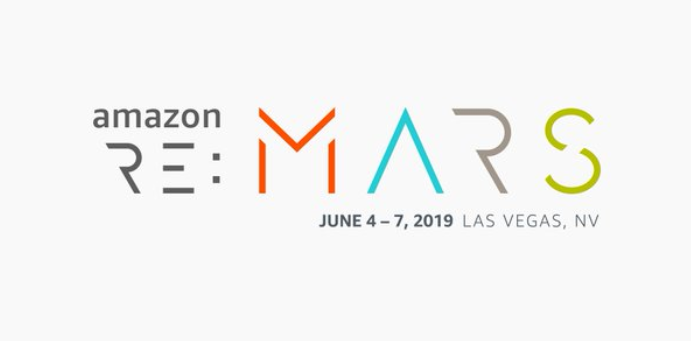
Image Source: https://tinyurl.com/y4ecnlcj
What is re:MARS?
In typical fashion, Amazon once again named the conference with the prefix “re:” (such as the 2019 re:Invent conference). It may seem inconsequential, but in English grammar a prefix is placed at the beginning of a word to change its meaning. This encompasses the very idea behind these Amazon events, to showcase how these fields are changing the meaning of our future.Amazon put together this latest event to highlight Machine learning, Automation, Robotics and Space (MARS) so business and technical leaders could come together to experience the latest in AI technologies and learn more about how these fields are shaping the future. Also Learn how to Transform your Amazon business with ERP Integration
Perceptions of Amazon and AWS
Your initial perception of AWS (Amazon Web Services) may be that it is simply a hosting provider, offering a cloud-based infrastructure to run your applications. However, after further exploration, AWS is involved in everything you can think of.Here are a few things we discovered about Amazon and AWS:
- Alexa Skills: Use the power of Amazon’s Alexa to create specific skills and teach it how to respond.
- Amazon Transcribe: An automatic speech recognition (ASR) service to add speech-to-text to applications.
- Amazon Personalize: A Machine Learning service that provides a recommendation engine for your store.
- Amazon Robotics & Automation: Amazon is leading the game in automation and within the robotics ecosystem.
- Amazon Forecast: With your historical data, you can use machine learning for more accurate forecasting.
- Amazon Sage Maker: Amazon’s tools to build, train, and deploy models with Machine Learning.
Highlights from the Event
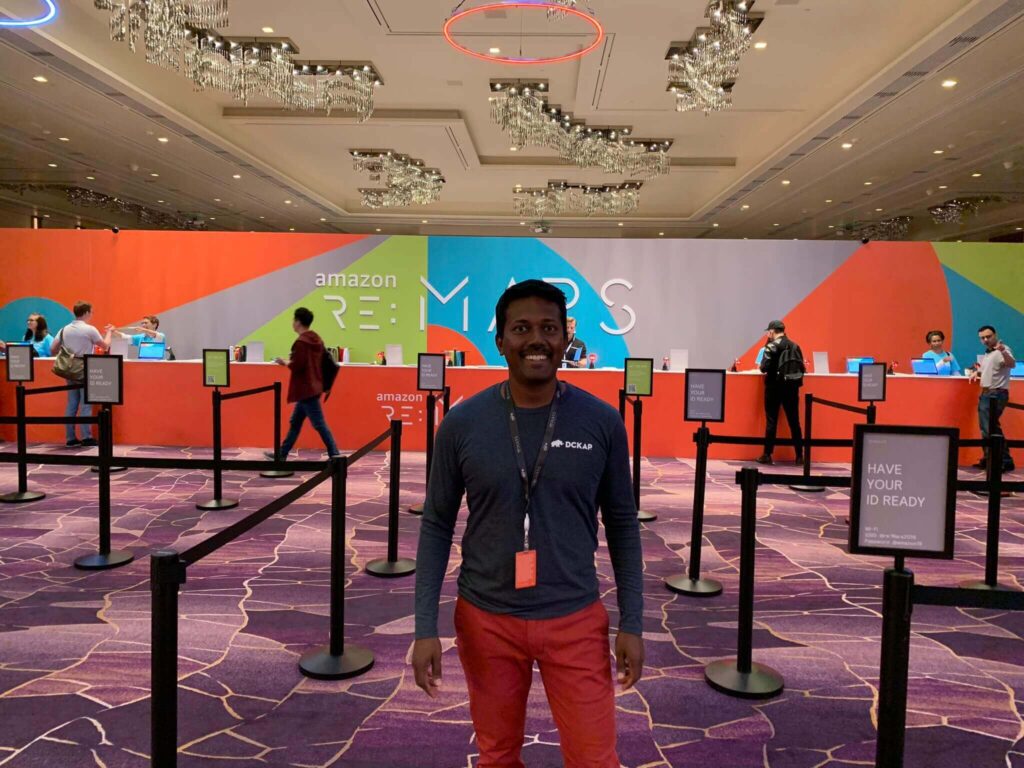 The first day of the conference was packed with many different Machine Learning workshops to get our feet wet and immerse ourselves in the experience. We attended a couple of interesting workshops – one on Alexa Skills and another on creating a contact center management system with Chatbots and Speech-to-Text (Amazon Transcribe).
The first day of the conference was packed with many different Machine Learning workshops to get our feet wet and immerse ourselves in the experience. We attended a couple of interesting workshops – one on Alexa Skills and another on creating a contact center management system with Chatbots and Speech-to-Text (Amazon Transcribe).
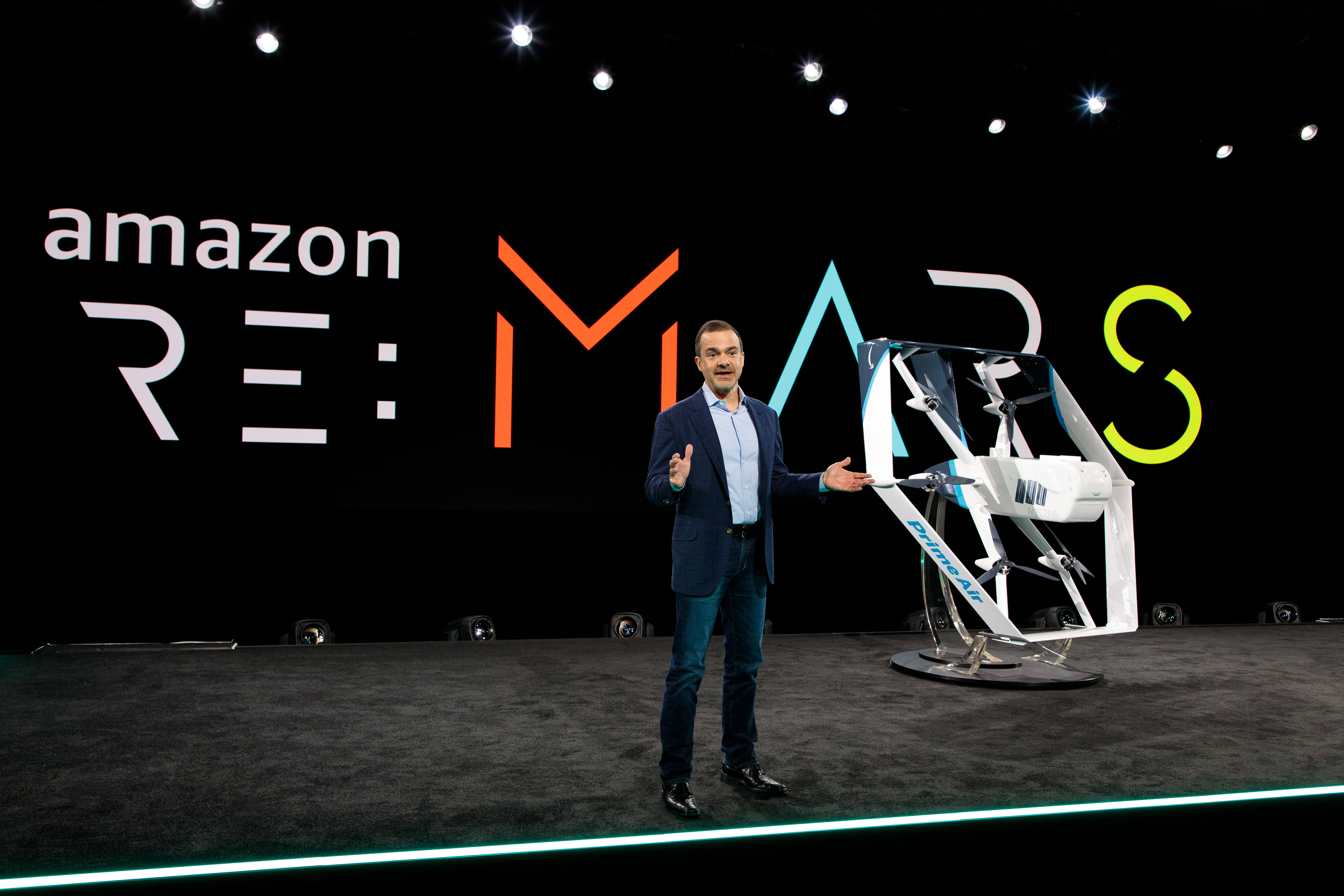
Wednesday (6/5) – Image Source: https://tinyurl.com/y3h3tqrx
The event kicked off with a keynote from Jeff Wilke, CEO of Amazon Worldwide Consumer, followed by a session on Amazon Go, an automated system where you no longer need to stand in line to checkout your items.
Dave Limp, Senior Vice President of Devices and Services at Amazon, talked about the diversity of the attendees and the desire to bring these visionaries together to innovate our lives. He stated that Machine Learning is in the foundation of everything we do.
Rohit Prasad, VP & Head Scientist for Alexa, demonstrated how Alexa works. For example, how to program Alexa if you want to book a movie ticket via Atom Tickets (Movie Skills), find an appropriate restaurant (Restaurant Skills) and book an Uber (Uber Skills).
Colin M. Angle, CEO of iRobot, demonstrated different kinds of robots and talked about the evolution of the Roomba vacuum cleaner, as well as the impressive history of the company, having been founded 29 years ago.
Dr. Werner Vogels, CTO of Amazon, spoke about Airbnb, Dropbox, and a lot of household names that are powered by AWS. Machine Learning is ubiquitous, and it is an integral part of everything Amazon does. Machine Learning is also used in sports, like the NFL.
Andrew Ng, Founder of Coursera, provided some tips to find the right uses for AI:
- Start Small (2-6 months)
- Automate Tasks (not jobs)
- Combine AI and Subject Matter Expertise
He also provided a few predictions for the future:
- AI will Become an Engineering Discipline
- Transition from Big Data to Small Data
- Meta Learning for Reinforcement Learning
Andrew Lo of MITtalked about economics, what it means in the modern age, and its implications for the future. As an example, Sears (founded in 1893) and Amazon had the same revenue in 2011. Then, in 2017, Sears declared bankruptcy.Finally, it was time for a Fireside Chat with Jeff Bezos, the Founder and CEO of Amazon himself.
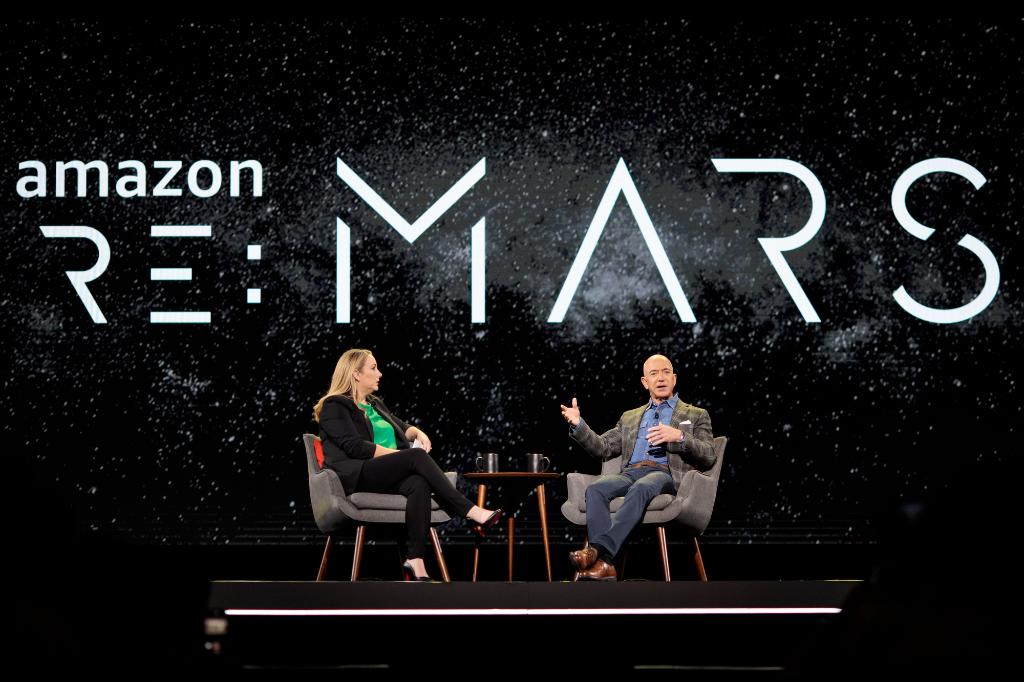
Image Source: https://tinyurl.com/y6a339dt
The following were some of the key takeaways:
- Write a lot. If someone writes a lot, it also means they read a lot.
- Ask yourself this question: what’s not going to change in the next 10 years?
- Access to broadband will become a fundamental human need.
- Encourage teammates to take risks and have an entrepreneurial mindset.
- Be customer obsessed and not competitor obsessed.
That's a wrap on the #reMARS keynotes! Catch the moments you missed on our live blog: https://t.co/Z2eAfBD0lT pic.twitter.com/dXQghcNFwm
— Amazon re:MARS (@AmazonreMARS) June 6, 2019

